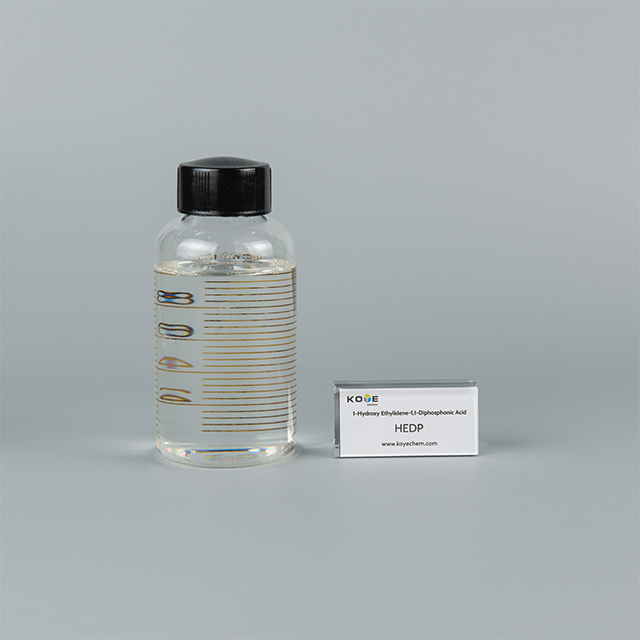Understanding the pH of HEDP
 Nov 17, 2023|
Nov 17, 2023| View:408|
View:408|1. Understanding pH:
pH is a measure of the acidity or alkalinity of a solution. It is measured on a logarithmic scale ranging from 0 to 14, with 7 being neutral. A pH below 7 indicates acidity, while a pH above 7 indicates alkalinity. pH plays a crucial role in determining the chemical behavior and effectiveness of HEDP solutions.

2. pH and HEDP Stability:
The stability of HEDP is greatly influenced by pH. HEDP is most stable at a pH range of 2-3. At lower pH values, such as below 2, the acid becomes highly corrosive and may lead to the degradation of HEDP. On the other hand, at higher pH values, above 3, HEDP can undergo hydrolysis, resulting in reduced effectiveness and performance.
3. Applications and pH Control:
Water Treatment:
In water treatment applications, HEDP is commonly used as a sequestering agent and scale inhibitor. The optimal pH range for HEDP in water treatment is typically between 2.8 and 3.2. Maintaining the pH within this range ensures the stability of HEDP and maximizes its performance in preventing scale formation and controlling water hardness.
Detergent Industry:
HEDP is also widely employed in the detergent industry as a chelating agent and stabilizer. The pH range for HEDP in detergents varies depending on the specific formulation and application. However, it is generally recommended to maintain the pH between 2.5 and 4.5 to ensure effective chelation and stability of HEDP in detergent solutions.
Industrial Processes:
In various industrial processes, such as metal cleaning, descaling, and oilfield applications, pH control is crucial for optimizing the performance of HEDP. The appropriate pH range varies depending on the specific process and desired outcomes. However, maintaining the pH within the recommended range for HEDP stability is essential to achieve the desired results.
4. Importance of pH Monitoring and Adjustment:
To ensure the effectiveness and stability of HEDP, regular pH monitoring and adjustment are necessary. pH can be measured using pH meters or test strips, and adjustments can be made by adding acid or alkali solutions. By closely monitoring and controlling the pH, the performance and longevity of HEDP can be maximized in various applications.
pH plays a vital role in the stability and effectiveness of HEDP solutions. Maintaining the appropriate pH range ensures optimal performance in water treatment, detergents, and industrial processes. Regular pH monitoring and adjustment are necessary to achieve the desired outcomes and maximize the benefits of using HEDP in different applications.








